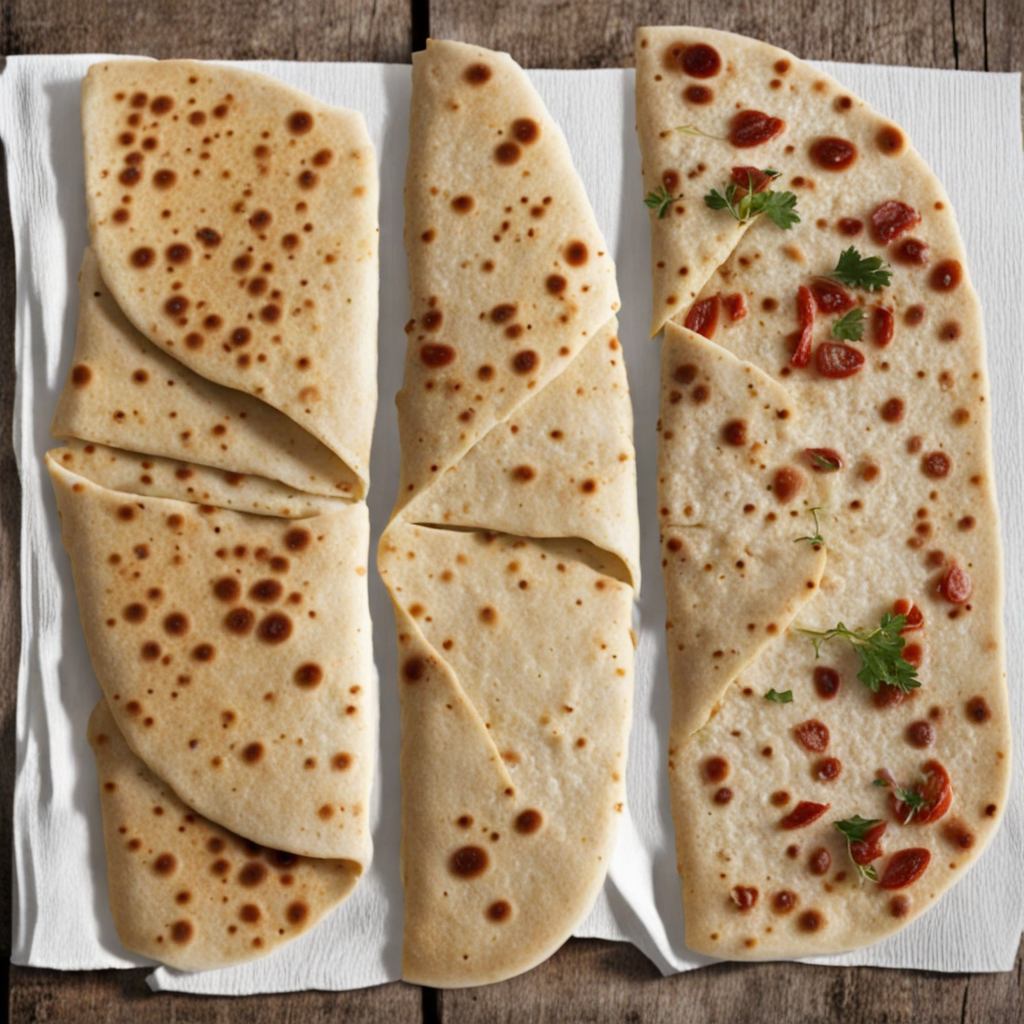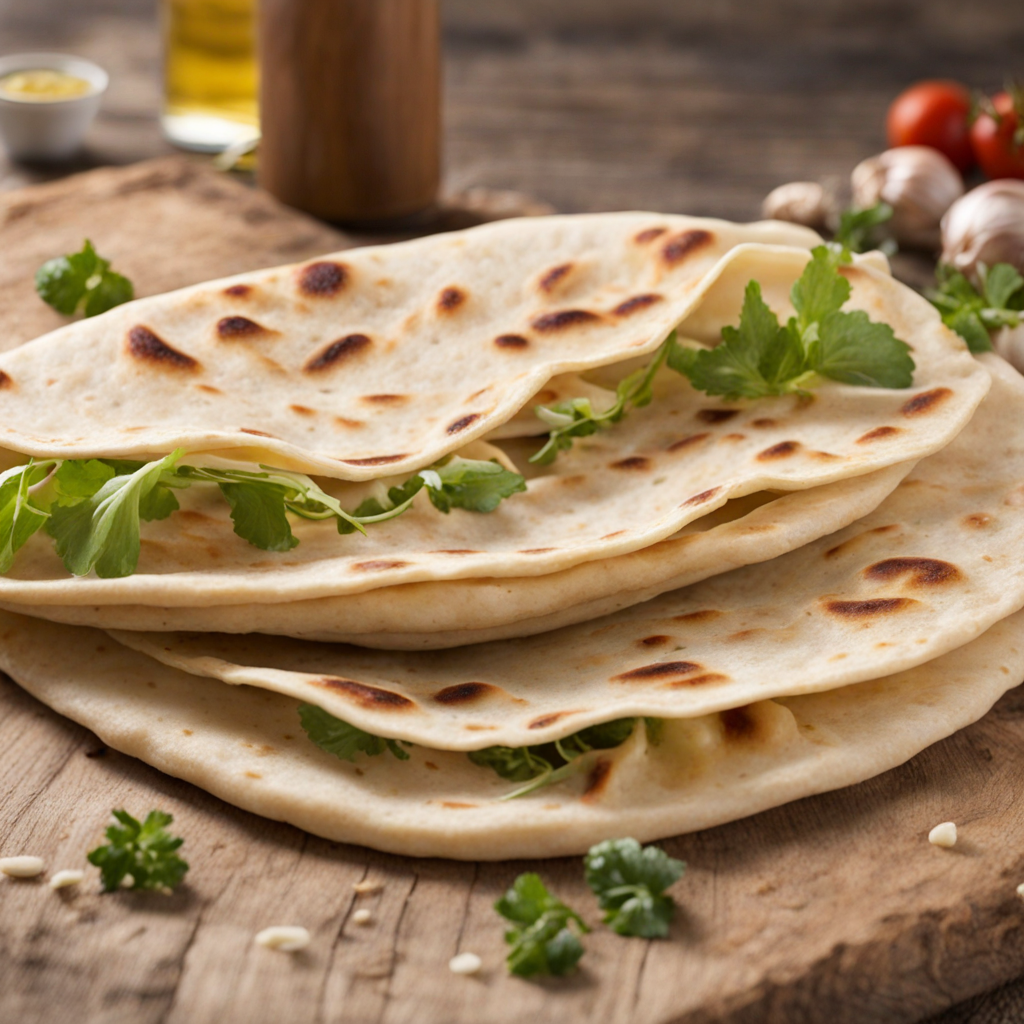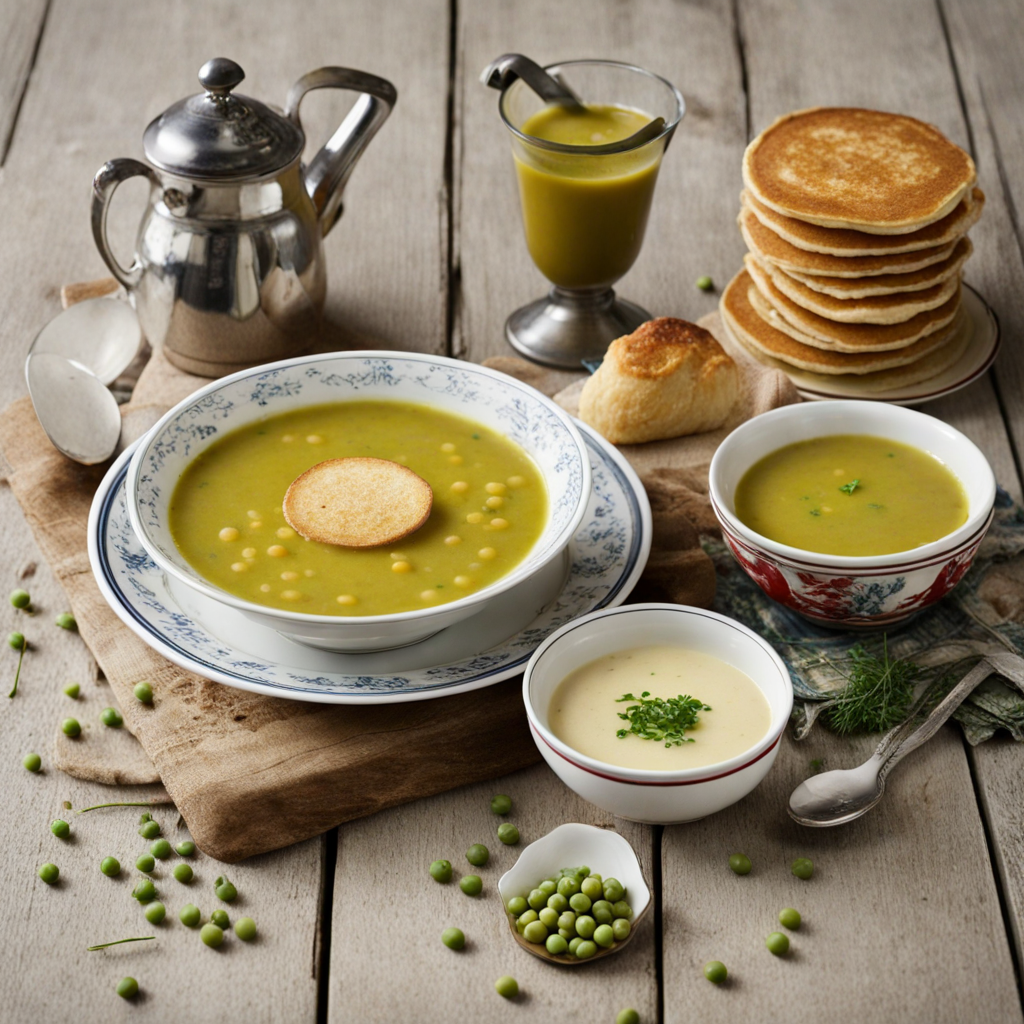Soft Flatbread
Soft Flatbread, known as "tunnbröd" in Sweden, is a delightful culinary creation that captures the essence of Swedish comfort food. This traditional flatbread is known for its tender, pliable texture, making it perfect for wrapping or serving alongside various dishes. Made from a blend of wheat and rye flour, it's often leavened slightly to achieve a subtle softness that stands out against the crispier flatbreads found in other cultures. The gentle flavor of the bread is enhanced by the subtle sweetness of the rye, creating a harmonious balance that pairs well with both savory and sweet toppings. One of the most cherished ways to enjoy Soft Flatbread is by using it as a wrap for iconic Swedish fillings such as cured salmon, pickled herring, or thinly sliced meats. The soft, slightly chewy texture of the bread complements these rich flavors, providing a satisfying contrast that enhances the overall experience. Additionally, it can be enjoyed with spreads like butter or cheese, allowing the bread's delicate flavor to shine through while providing a comforting, homey feel to each bite. Soft Flatbread is not just a staple on the Swedish table but also a versatile canvas for culinary creativity. It can serve as a base for open-faced sandwiches, where fresh vegetables, herbs, and spreads come together in a colorful presentation. The bread's adaptability allows it to fit seamlessly into both casual meals and festive gatherings, making it a beloved choice across various occasions. Discovering Soft Flatbread is an invitation to experience the warmth of Swedish hospitality through its simple yet delightful flavors.
How It Became This Dish
The History of Tunnbröd: Sweden's Iconic Flatbread Tunnbröd, or "thin bread," is a traditional Swedish flatbread that has been a staple of the country's culinary landscape for centuries. With its origins steeped in the rural traditions of Sweden, tunnbröd is more than just a food item; it is a symbol of cultural identity, regional pride, and historical resilience. This engaging history will delve into the origins, cultural significance, and evolution of tunnbröd, revealing its place in Swedish hearts and kitchens. #### Origins: A Rustic Beginnings The origins of tunnbröd can be traced back to the Viking Age (circa 793-1066 AD), a period characterized by agricultural development and the establishment of trade routes across Europe. Early Scandinavian farmers relied heavily on grains such as barley and rye, which were abundant in the region. These grains were ground into flour and mixed with water to create a simple dough, which was then rolled out into thin discs and baked on hot stones or in primitive ovens. The earliest forms of tunnbröd were likely coarse and rustic, with a texture that reflected the available ingredients and methods of preparation. Over the centuries, as agricultural practices evolved and ovens became more sophisticated, so too did the techniques for making this flatbread. The introduction of wheat flour in the Middle Ages allowed for a lighter, more refined version of tunnbröd, further enhancing its appeal. #### Cultural Significance: A Bread for All Occasions Tunnbröd holds a special place in Swedish culture, serving as a versatile accompaniment to various dishes and a symbol of hospitality. Traditionally, it has been used to wrap or serve hearty fillings, reflecting the agrarian lifestyle of rural Sweden. Its uses are diverse: it pairs beautifully with cured meats, cheeses, and pickled herring, making it a staple at smörgåsbord, a traditional Swedish buffet. The cultural significance of tunnbröd goes beyond mere sustenance. It is often linked to celebrations and rituals, particularly in Northern Sweden, where it is an essential component of the traditional "surströmming" (fermented herring) feast. This dish is renowned for its strong aroma, and tunnbröd serves as the perfect vessel to balance the pungent flavors. The bread is used to create wraps that contain the fish, onions, and potatoes, transforming the meal into a communal experience that emphasizes togetherness and tradition. In addition to its role in feasts and celebrations, tunnbröd has also been embraced as a symbol of Swedish craftsmanship. Many families have their own recipes and techniques, handed down through generations. These variations reflect regional differences in ingredients and preparation methods. In some areas, tunnbröd is made with rye flour, resulting in a darker and denser bread, while others prefer a lighter version made from wheat. This local variation contributes to the rich tapestry of Swedish culinary heritage. #### Development Over Time: From Peasant Bread to Gourmet Delight As Sweden transitioned from an agrarian society to an industrialized nation in the 19th century, the production and consumption of tunnbröd began to change. The advent of mechanization and the rise of bakeries made the bread more accessible to the urban population. Tunnbröd evolved from a staple of rural diets to a beloved treat enjoyed by city dwellers, who appreciated its versatility and convenience. In the early 20th century, the popularity of tunnbröd surged, particularly with the emergence of the Swedish “kafé” culture. Cafés began incorporating tunnbröd into their menus, serving it with coffee and pastries. This shift marked the transformation of tunnbröd from a rustic, homemade item to a commercial product. Bakeries began producing various types of tunnbröd, including flavored versions with herbs and spices, catering to the evolving tastes of the Swedish populace. The post-World War II era brought further changes as convenience became a priority in the fast-paced, modern world. Pre-packaged tunnbröd entered the market, allowing consumers to enjoy the traditional bread without the time-consuming process of making it from scratch. However, this shift also sparked a movement among food enthusiasts and chefs who sought to revive artisanal baking methods. As part of Sweden's broader food renaissance, many have returned to traditional recipes and techniques, emphasizing quality ingredients and craftsmanship. #### Tunnbröd Today: A Culinary Icon Today, tunnbröd is celebrated not only in Sweden but also in international culinary circles. It has gained recognition as an emblem of Swedish cuisine, often featured in restaurants and food festivals around the world. The bread is not only enjoyed for its taste but also for its versatility, serving as a base for modern interpretations of traditional Swedish dishes. Chefs have creatively repurposed tunnbröd into wraps, sandwiches, and even pizza crusts, showcasing its adaptability in contemporary cuisine. Additionally, tunnbröd is increasingly associated with the concept of "slow food," which emphasizes local, sustainable ingredients and traditional cooking methods. The rise of interest in organic and locally sourced products has led to a revival of artisanal tunnbröd, with many bakers experimenting with heirloom grains and natural leavening techniques. This movement not only honors the history of the bread but also promotes a sustainable future for Swedish agriculture. #### Conclusion: A Lasting Legacy Tunnbröd is more than just a flatbread; it is a reflection of Sweden's rich agricultural heritage, cultural identity, and culinary innovation. From its rustic beginnings to its status as a modern gourmet delight, tunnbröd has evolved while remaining deeply rooted in tradition. It serves as a reminder of the resilience and adaptability of Swedish culture, connecting generations through shared meals and experiences. As Sweden continues to embrace its culinary heritage, tunnbröd stands as a symbol of national pride and community. Whether enjoyed at a festive gathering, as part of a simple meal, or reimagined in a contemporary dish, tunnbröd will undoubtedly continue to hold its place as an essential element of Swedish gastronomy for years to come.
You may like
Discover local flavors from Sweden







